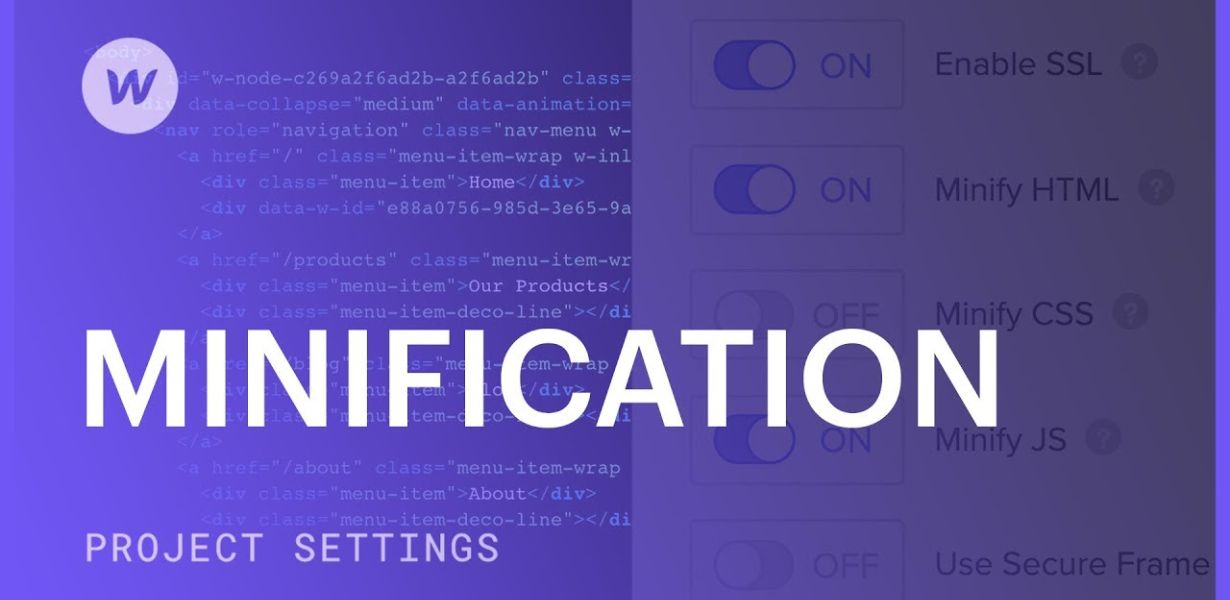
JavaScript Minification Techniques: Streamlining for Faster Page Load
- Post
- August 8, 2023
- Minification, Web Performance, Web Technologies
- 0 Comments
In the world of web development, optimizing page speed has become paramount. Users expect websites to load quickly, and search engines favor faster-loading sites in their rankings. JavaScript, a crucial component of modern web applications, can often be a source of performance bottlenecks. Enter JavaScript minification techniques – the secret sauce to enhancing your website’s loading speed. In this comprehensive guide, we delve into the intricacies of minification, unveiling the strategies that will empower you to boost your website’s performance and provide users with a seamless browsing experience.
Understanding Minification: Stripping Down for Efficiency
Minification involves the process of slimming down your JavaScript code by removing unnecessary characters such as whitespace, comments, and even shortening variable names. This process reduces the overall file size of your scripts, leading to faster downloads and execution. The key here is to retain the functionality of your code while significantly improving its efficiency. By employing minification, you’re essentially decluttering your codebase, paving the way for quicker load times.
The Power of Code Minification
Code minification is a multifaceted approach that involves several techniques to optimize your JavaScript files. Let’s explore some of the most effective methods:
Whitespace Removal: Extraneous whitespace doesn’t impact a script’s functionality but adds to its size. Removing spaces, tabs, and line breaks can shave off precious bytes, contributing to faster loading times.
Comment Stripping: While comments are valuable for code documentation, they’re redundant during runtime. Stripping them off before deployment reduces file size and improves performance.
Variable Renaming: Lengthy variable names are meaningful for developers but add to the file size. Minification tools can shorten these names without affecting functionality.
Unused Code Elimination: Often, code that’s commented out or not utilized contributes to the file size. Regularly auditing your codebase for unused portions can optimize the script.
String and Data Compression: Minification tools can compress strings and data, reducing their size without compromising functionality.
Tree Shaking: This technique involves eliminating unused code during the bundling process, resulting in smaller, more efficient JavaScript files.
The Marvel of JavaScript Minifiers
JavaScript minifiers are the tools that breathe life into code minification. They take your code, apply the techniques we discussed, and generate a compact, optimized version. Some popular minifiers include:
UglifyJS: Known for its speed and efficiency, UglifyJS is a widely-used minifier that offers various optimization options, including mangling, dead code removal, and more.
Terser: This minifier is a successor to UglifyJS and is even more performant. It supports modern JavaScript features and produces highly compressed output.
Closure Compiler: Developed by Google, Closure Compiler goes beyond basic minification, performing advanced optimizations and even type checking.
Implementing Minification: A Step-by-Step Guide
To integrate minification into your development workflow, follow these steps:
Backup: Always keep an unminified version of your code as a backup.
Select a Minifier: Choose a minification tool based on your project’s needs and compatibility.
Configure: Explore the options provided by the minifier to fine-tune the optimization process.
Test: Thoroughly test the minified code to ensure it retains its functionality.
Automate: Integrate the minification process into your build pipeline to ensure continuous optimization.
Common Pitfalls and Solutions
Even though minification is a powerful technique, it’s essential to be cautious:
Beware of Aggressive Minification: Over-optimizing can lead to unexpected behavior. Test thoroughly to ensure your code remains functional.
Debugging Challenges: Minified code is hard to debug. Keep an unminified version handy for troubleshooting.
External Libraries: Minifying third-party libraries might cause compatibility issues. Use CDNs when possible to avoid this.
Final Words
As the digital landscape evolves, delivering exceptional user experiences remains paramount. JavaScript minification techniques empower developers to create leaner, faster-loading websites, satisfying both user expectations and search engine algorithms. By understanding the nuances of minification, selecting appropriate tools, and following best practices, you can unlock the secret to faster page loading and gain a competitive edge in today’s fast-paced online world.
Commonly Asked Questions
Q1: Can minification lead to any compatibility issues?
Minification itself rarely causes compatibility problems. However, aggressive minification may inadvertently remove necessary code, leading to issues. Always thoroughly test your minified code to avoid such pitfalls.
Q2: How often should I minify my JavaScript code?
Minification is typically integrated into the build process. As you make changes to your code, the minified version should be updated accordingly. Automation tools can simplify this process.
Q3: Are there any risks associated with using minification tools?
While minification tools are generally safe, there’s a slight risk of introducing bugs or issues if used carelessly. Always backup your code and test the minified version thoroughly before deployment.
Q4: Can I use minification alongside other optimization techniques?
Absolutely! Minification complements other optimization techniques like caching, lazy loading, and content delivery networks (CDNs). Combining these strategies can lead to a highly optimized website.
Q5: Do I need to minify all JavaScript files, including third-party libraries?
Minifying your custom code is essential, but minifying third-party libraries might not always be necessary. Instead, consider using CDNs for popular libraries, as they often offer minified versions for optimized delivery.




